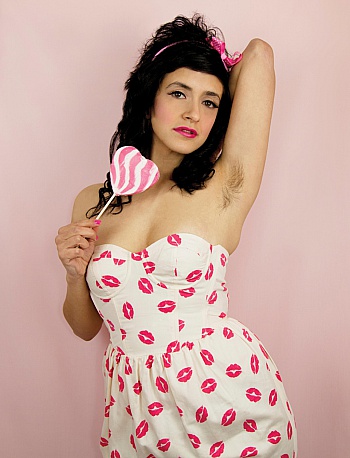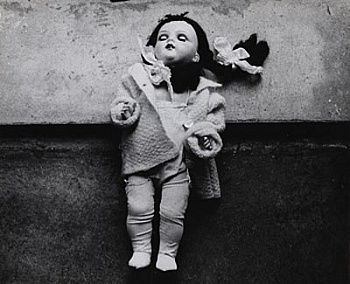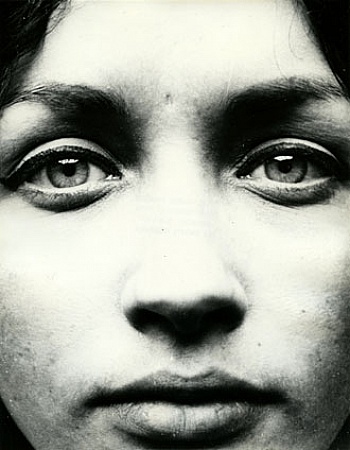
Marek Piasecki
#Photographe
- Festival
1st Edition of the « Warsaw Photo Days » festival in Poland
 PRINCESSES
INTERNATIONAL MULTIMEDIA EXHIBITION
New Space (Nowe Miejsce)
51/2 Al. Jerozolimskie (Jerozolimskie Av.)
Curator: Katarzyna Majak
Substantive consultant: Agnieszka Żechowska
Opening: October 4, 6 p.m.
DJ Wika’s concert, 7 p.m.
Duration: October 5-27, 2013
Miss Czech Republic from “I Am an Other“,Interactive video instalation, 2009 © 2. Catrine Val
A multimedia exhibition "Princesses" aims at presenting video and photographs by artists, photographers from Singapore, Japan, the United States, Germany, Canada, the UK, Finland and Poland. The common thread linking all the works displayed at the exhibition is an attempt to capture the image of the modern woman-as-a-princess...
PRINCESSES
INTERNATIONAL MULTIMEDIA EXHIBITION
New Space (Nowe Miejsce)
51/2 Al. Jerozolimskie (Jerozolimskie Av.)
Curator: Katarzyna Majak
Substantive consultant: Agnieszka Żechowska
Opening: October 4, 6 p.m.
DJ Wika’s concert, 7 p.m.
Duration: October 5-27, 2013
Miss Czech Republic from “I Am an Other“,Interactive video instalation, 2009 © 2. Catrine Val
A multimedia exhibition "Princesses" aims at presenting video and photographs by artists, photographers from Singapore, Japan, the United States, Germany, Canada, the UK, Finland and Poland. The common thread linking all the works displayed at the exhibition is an attempt to capture the image of the modern woman-as-a-princess... - Exposition
Photography in Communist Poland: a surrealist spirit?
 There was never a Surrealist movement as such in Poland, neither during the inter-war years nor after 1945. Nevertheless, certain strategies used by the Surrealists in cities like Paris and Prague in the 20s helped the Polish photographic scene, after the Second World War, make its greatest strides towards a modern conception of the image.
In a post-war cultural context first dominated by pictorialist aesthetics, then influenced by socialist realism, and finally polarized by propagandist photoreportage, the avantgarde sought to reclaim a place in the field of photographic art using various techniques (e.g. photomontage, chemical experiments, and reappropriation of images) and methods popular in Surrealist circles (e.g. staging and “flânerie”).
What was at stake here in Communist Poland was of cour...
There was never a Surrealist movement as such in Poland, neither during the inter-war years nor after 1945. Nevertheless, certain strategies used by the Surrealists in cities like Paris and Prague in the 20s helped the Polish photographic scene, after the Second World War, make its greatest strides towards a modern conception of the image.
In a post-war cultural context first dominated by pictorialist aesthetics, then influenced by socialist realism, and finally polarized by propagandist photoreportage, the avantgarde sought to reclaim a place in the field of photographic art using various techniques (e.g. photomontage, chemical experiments, and reappropriation of images) and methods popular in Surrealist circles (e.g. staging and “flânerie”).
What was at stake here in Communist Poland was of cour... - Exposition
La photographie en Pologne communiste : un esprit surréaliste ?
 Il n’y a pas eu à proprement parler de mouvement surréaliste en Pologne, ni durant l’entre-deux-guerres, ni après 1945. Il n’en demeure pas moins que certaines stratégies utilisées par les surréalistes de Paris à Prague au cours des années 1920-1930 contribuèrent à ce que le milieu photographique polonais opère, après la Seconde Guerre mondiale, ses plus grandes avancées vers une conception moderne de l’image.
Dans un contexte culturel d’après-guerre d’abord fortement dominé par l’esthétique pictorialiste, puis marqué par le réalisme socialiste, et finalement polarisé autour du photoreportage à vocation propagandiste, les artistes d’...
Il n’y a pas eu à proprement parler de mouvement surréaliste en Pologne, ni durant l’entre-deux-guerres, ni après 1945. Il n’en demeure pas moins que certaines stratégies utilisées par les surréalistes de Paris à Prague au cours des années 1920-1930 contribuèrent à ce que le milieu photographique polonais opère, après la Seconde Guerre mondiale, ses plus grandes avancées vers une conception moderne de l’image.
Dans un contexte culturel d’après-guerre d’abord fortement dominé par l’esthétique pictorialiste, puis marqué par le réalisme socialiste, et finalement polarisé autour du photoreportage à vocation propagandiste, les artistes d’...
Modifier l'image
 PRINCESSES
INTERNATIONAL MULTIMEDIA EXHIBITION
New Space (Nowe Miejsce)
51/2 Al. Jerozolimskie (Jerozolimskie Av.)
Curator: Katarzyna Majak
Substantive consultant: Agnieszka Żechowska
Opening: October 4, 6 p.m.
DJ Wika’s concert, 7 p.m.
Duration: October 5-27, 2013
Miss Czech Republic from “I Am an Other“,Interactive video instalation, 2009 © 2. Catrine Val
A multimedia exhibition "Princesses" aims at presenting video and photographs by artists, photographers from Singapore, Japan, the United States, Germany, Canada, the UK, Finland and Poland. The common thread linking all the works displayed at the exhibition is an attempt to capture the image of the modern woman-as-a-princess...
PRINCESSES
INTERNATIONAL MULTIMEDIA EXHIBITION
New Space (Nowe Miejsce)
51/2 Al. Jerozolimskie (Jerozolimskie Av.)
Curator: Katarzyna Majak
Substantive consultant: Agnieszka Żechowska
Opening: October 4, 6 p.m.
DJ Wika’s concert, 7 p.m.
Duration: October 5-27, 2013
Miss Czech Republic from “I Am an Other“,Interactive video instalation, 2009 © 2. Catrine Val
A multimedia exhibition "Princesses" aims at presenting video and photographs by artists, photographers from Singapore, Japan, the United States, Germany, Canada, the UK, Finland and Poland. The common thread linking all the works displayed at the exhibition is an attempt to capture the image of the modern woman-as-a-princess... There was never a Surrealist movement as such in Poland, neither during the inter-war years nor after 1945. Nevertheless, certain strategies used by the Surrealists in cities like Paris and Prague in the 20s helped the Polish photographic scene, after the Second World War, make its greatest strides towards a modern conception of the image.
In a post-war cultural context first dominated by pictorialist aesthetics, then influenced by socialist realism, and finally polarized by propagandist photoreportage, the avantgarde sought to reclaim a place in the field of photographic art using various techniques (e.g. photomontage, chemical experiments, and reappropriation of images) and methods popular in Surrealist circles (e.g. staging and “flânerie”).
What was at stake here in Communist Poland was of cour...
There was never a Surrealist movement as such in Poland, neither during the inter-war years nor after 1945. Nevertheless, certain strategies used by the Surrealists in cities like Paris and Prague in the 20s helped the Polish photographic scene, after the Second World War, make its greatest strides towards a modern conception of the image.
In a post-war cultural context first dominated by pictorialist aesthetics, then influenced by socialist realism, and finally polarized by propagandist photoreportage, the avantgarde sought to reclaim a place in the field of photographic art using various techniques (e.g. photomontage, chemical experiments, and reappropriation of images) and methods popular in Surrealist circles (e.g. staging and “flânerie”).
What was at stake here in Communist Poland was of cour... Il n’y a pas eu à proprement parler de mouvement surréaliste en Pologne, ni durant l’entre-deux-guerres, ni après 1945. Il n’en demeure pas moins que certaines stratégies utilisées par les surréalistes de Paris à Prague au cours des années 1920-1930 contribuèrent à ce que le milieu photographique polonais opère, après la Seconde Guerre mondiale, ses plus grandes avancées vers une conception moderne de l’image.
Dans un contexte culturel d’après-guerre d’abord fortement dominé par l’esthétique pictorialiste, puis marqué par le réalisme socialiste, et finalement polarisé autour du photoreportage à vocation propagandiste, les artistes d’...
Il n’y a pas eu à proprement parler de mouvement surréaliste en Pologne, ni durant l’entre-deux-guerres, ni après 1945. Il n’en demeure pas moins que certaines stratégies utilisées par les surréalistes de Paris à Prague au cours des années 1920-1930 contribuèrent à ce que le milieu photographique polonais opère, après la Seconde Guerre mondiale, ses plus grandes avancées vers une conception moderne de l’image.
Dans un contexte culturel d’après-guerre d’abord fortement dominé par l’esthétique pictorialiste, puis marqué par le réalisme socialiste, et finalement polarisé autour du photoreportage à vocation propagandiste, les artistes d’...